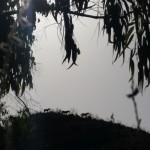 Leaves swirl in the thicket as branches bend and rustle. The horses swing their heads towards the disturbance and freeze. They peer through the rays of the early morning sun, straining to catch a glimpse of what it is that is causing the commotion. Our eyes follow theirs. The leaves are still or so it seems squinting into the sun. I turn to the mares. They will soon let us know whether they have spotted anything, sooner than we would be able to. Coiled to sprint into action at the first sign of danger, the horses glint golden in the glow of the morning. Some days before we spotted a pack of wild boars while out on another break-of-day walk. Could they be back? Nothing. Vicki and I move closer to the mares, stroke and reassure them as we head off. We are a few paces up the track when it happens again. What is stalking us?
Leaves swirl in the thicket as branches bend and rustle. The horses swing their heads towards the disturbance and freeze. They peer through the rays of the early morning sun, straining to catch a glimpse of what it is that is causing the commotion. Our eyes follow theirs. The leaves are still or so it seems squinting into the sun. I turn to the mares. They will soon let us know whether they have spotted anything, sooner than we would be able to. Coiled to sprint into action at the first sign of danger, the horses glint golden in the glow of the morning. Some days before we spotted a pack of wild boars while out on another break-of-day walk. Could they be back? Nothing. Vicki and I move closer to the mares, stroke and reassure them as we head off. We are a few paces up the track when it happens again. What is stalking us?
From the dark
Turning my back to the fracas in the bush, I subside into the ground position, energy centred at the core, legs coiled to move if required while relaxing my toes and tuning in to Pip’s energy. She is tense but not frantic. The rustle becomes a rattle. The noise is too much for Anaïs. She bolts. Vicki tries to hold on. “Drop the rope,” I cry. She does. A little way up the track the brown mare halts. She is not going anywhere without us and certainly not if danger is lurking in the bush. The disturbance subsides. We push on. Anaïs waits until Vicki takes up the lead again. Then we head off up the track.
Half an hour later we arrive at a large enclosure encircled by eucalyptus trees towering high above us, so reminiscent of Australia. A small bridge spans what would normally be a swiftly moving stream cascading over a small waterfall into a dammed-up pool but which has now been reduced to a dry, pebble-strewn bed under the harsh heat of summer. A short way upstream the water widens and deepens, backed up well into the undergrowth and held in check by a large bank of pebbles leading down towards the bridge on the left. The entire area is held in the cool embrace of trees and bush providing some shelter from the brightening sun. And it is from the dark recess at the boundary of sight that a large black shadow bounds, an almost muted bark emanating from its snout.
A cry of distress
Yet there is no threat in its voice. Rather, it is plaintive, more a cry of distress and possibly a call for help. Perhaps this is why the horses do not shy or prance, displaying not a shred of fear or panic. It must be, surely. These sublime beings with their highly sensitive capacity for detecting energy have sensed the essence of the creature which speeds towards us long before Vicki and I have ascertained that we are not dealing with a threat.
Pip, always open to exploring the domain of smaller creatures, is alert and curious. Anaïs is a bit more circumspect, yet her curiosity must be quenched. Vicki calls to the dog, who has now slowed down to a limp. Cautiously the creature approaches. Pip dips slightly to greet the dog and is met by a low growl. There is no menace in it, merely a hint of the need for boundaries. Pip stays her head mid-air. Close up, the dog presents as a German shepherd after a near miss in a minefield. Her coat is a mess, especially towards the tail, which itself resembles a plucked appendage, and she is covered in ticks and probably fleas and other creepy crawlies. Is the dog someone’s lost friend or has she been abandoned?
Sheila
Vicki discovers that the dog is a bitch and immediately christens her Sheila. Clearly there is an Australian influence afoot here. In the absence of a name, are not all women “Sheila” and all men “Bruce” down under? And it would appear that Sheila has been on walkabout for many a long month and perhaps then some. More cautious and perhaps somewhat reluctant to embrace the seeming inevitability of the outcome of this encounter (I know my soulmate and myself, fairly well anyway), I back off, while Vicki plunges ahead.
She is a sucker for human company, this Sheila, and forges ahead into Vicki’s welcoming arms. The writing is on the wall. This dog is coming with us despite the fact that we have nowhere to keep her. So be it. But first the horses have to be returned to the livery yard. Sheila keeps pace with us momentarily before allowing us to pull ahead and disappear up the road. And so we return, feed the mares their post-activity muesli and supplements, then allow them to rejoin the herd.
Lost
Upon our return to the eucalyptus grove the dog is nowhere to be seen. Vicki is deeply saddened. I am highly relieved. Yet I know what is to come next. Yes, a search, for as long as it takes until we find her or collapse in exhaustion. Vicki returns to where we first saw the German shepherd. I circle through the surroundings going as far as accessibility permits within the radius of where I expect Sheila may have walked to in our absence. Nothing. There is absolutely no trace of her. Perhaps this is best.
I turn back towards the bridge, where Vicki is calling to the dog using a name that she has probably never had. On the way back I decide to check the most likely spot where a human might head for but not where I expect to find a hurting stray. The dammed-up pool is where humans flock to during the hot weekends. Although it is small, its cool beauty is comforting in unpleasantly hot conditions. And it is there that I find her placid and subdued, lying on a bed of rare green grass in a hollow beside a rocky outcrop. She is happy to have been discovered. Inexplicably, my pulse races with joy and I call to Vicki. It is time to see whether we can save this gloriously filthy, pest-ridden creature.
Can we save you?
Trustingly, Sheila allows us to put a horse lead round her and take her to the car. There she allows me to lift her onto a horse rug draped across the back seat. It is then that I feel and see the lesions scarring her belly. Vicki climbs in next to Sheila and I get to play taxi driver. The drive to the vet is uneventful. The English-speaking assistant listens to our story and nods her head. She checks to see if Sheila has a microchip as required by law. She does not. An abandoned dog? She is not the first. Just this morning they arrived at work to find a litter of four pups abandoned on their doorstep. We are given a queuing ticket and take a seat. Sheila snuggles up to Vicki while I field requests from clients on my smartphone.
While we are waiting and after the clients have been dealt with, Vicki and I start calling around to see if there is anyone who would be able to take Sheila. We are staying in a block of flats from which dogs are banned, so we would not be able to keep her ourselves. The receptionist provides us with a long list of refuge centres and we dutifully start calling them. We take a photo of Sheila and flick it out through the internet. Within minutes someone has posted it on a local Facebook page.
A young man enters the waiting room with a large cocker spaniel in his hands. The creature is missing hair in places and what is left is dirty and matted. Another stray? There are too many or so it would appear. One after the other the refuge centres turn down our pleas for help. They are full. This is it. Saturation point. Can we save you? And you? And what about you? And you and you and you…?
A hard country
Why are Vicki and I drawn to countries which are so hard on animals? Australia was perhaps the toughest but that was due to its nature. We almost lost my dog, Smudge, to a paralysis tick, our cat, Panter, to a brown snake (the third most venomous species in the world), and Vicki’s puppy, Dubu, to a cane toad, touch and go in all three cases. Here in Spain though, it would seem that the tough conditions are largely manmade, although the environment can be challenging as well.
I reflect on how our horses are coping with what is probably the most challenging transition they have ever had to contend with. It certainly is for us. The flies and insects have been amongst the most trying of the challenges we have had to contend with but Anaïs appeared to have built up a resistance to them much sooner than Pip. Although both mares wear face masks during the day, Anaïs was soon able to go without a fly sheet even with horse flies buzzing around. It has only been since the dry heat forced the horse flies to withdraw in the course of June that Pip has been able to go without a fly rug. Yet my equine friend remains susceptible to those flies intent on laying eggs in the corners of her eyes. As a result she has had to have her eyes cleaned on two occasions and her naso-lacriminal ducts unblocked at least once. A fly mask is now indispensable around the clock. As we head into August with the heat beginning to dissipate, the days shortening and the air becoming perceptibly more humid, we are seeing more widespread signs of sweet itch in the herd. Even Pip and Anaïs are beginning to rub their heads and necks against anything hard to find relief. Derfen seems to be helping for the moment thankfully.
The heat has been a major challenge. Originating in the steppe of eastern Europe where temperatures can vary from as low as -20°C to 35°C or more, equus caballus is hardwired to withstand a considerable variation in temperature. The mares have only really been challenged when the mercury has soared above 40°C, going five degrees beyond this on at least one day, when the wind blew off the hot interior of the Iberian peninsula, what they call the terral in this part of the world. On days such as those we have had to hose down the mares, on at least two occasions because they were suffering mild heat stroke. Fortunately, 20 minutes under cold water is usually enough to restore their body temperature and allow them to recover. Perhaps it is also the heat which caused Pip to lose weight. For the past few months we have been feeding her alfalfa (lucerne) and hard feed (oats and muesli) twice a day in order to help her put on weight. Now finally, she is beginning to do so.
And then there is the story of hard countryside and sensitive feet. Anaïs was the first to be affected. Several weeks later Pip followed. As our barefoot trimmer, Rafa Caparrós (see my post entitled Something Special from Spain for more about Rafa), pointed out, the soles of the horses’ hooves had become very thin. It would appear that this is due to the composition of the material making up the horn of the hoof. In Belgium, where the land was largely soft and damp, and the climate cool, the horn is not as dense and relatively little pressure is brought to bare on it. Here in the Cost del Sol hinterland, the impact of the horse’s hooves on the hard, rocky surfaces which they traverse and the dryness of the climate have had the effect of compressing the horn built up in the cooler climate. As a result, the soles have thinned to the point of sensitivity.
So what is the solution for tender equine feet? As most horse people will tell you, the answer is “shoes”. Where we differ of course is in what we mean by “shoes”. Using the analogy of the human, I am referring to protective encasings into which the feet slip and which are then done up with laces, straps, velcro and the like to prevent them from falling off. Employing the same analogy, the metal things attached to the underside of the hoof with nails are studs. Fortunately, we still had one of the two pairs of Equine Fusion jogging shoes which we had bought for Pip, the other having been lost by the removal firm during the move. They fit Anaïs, so she gets to wear them. Also fortunately, we have a local distributor of Equine Fusion jogging shoes, from whom we have obtained the latest model for Pip. No straps, no ties, just velcro, they can be put on and taken off in a flash. In addition, their flexible sole does not compromise the hoof mechanism (as metal studs do) and they are much cheaper than metal studs in the long run. Pip and Anaïs get to wear their jogging shoes only when we do anything active with them, whether this occurs out in the countryside or in the manège. For the rest, we are monitoring the change in their hooves as they adapt to the new conditions. The new walls are perceptibly denser and the angle is steeper. Again, I am amazed at the living tissue comprising the hoof.
Futility
When I think of all the effort, energy and investment involved in trying to protect our horses from the harsh environment into which they are transitioning, I am not surprised to see the havoc which it has wreaked on Sheila’s body in the lengthy time during which she must have been wandering around. An old, soiled flea collar around her neck suggests that she was once some human’s treasured pet. Did she escape? Was she abandoned when times got tough as they have under the concerted efforts of northern European leaders to turn the southern parts of the continent into Third World reservoirs of cheap labour and natural resources, and even cheaper holiday destinations? Is she one of the legions of animals, including horses, who are suffering as a result?
Growing poverty and inequality in Europe
Is not the provision of refuge a futility if it remains unaccompanied by other more lasting measures? Since the economic crisis began years ago, refuge centres have sprung up throughout Spain as well-meaning ex-pats from Britain, the Netherlands and other northern European countries try to help the growing numbers of suffering animals. Now they are full and some have been forced to close as funding dries up. Even private individuals who have taken on refuge animals are doing it tough. But can you save every creature in need? And if you conclude that you cannot, can you play god and decide which to save and which not? And is the provision of refuge enough on its own or is it not a bit akin to trying to sponge a river dry? Should it not be accompanied by government measures to permit free euthanasia without the necessity for microchips and, in the long run, education to foster responsible animal care? Are we, by rescuing Sheila, not falling into the same trap as every other animal lover who moves to Spain and cannot remain unmoved by the suffering?
Life or death?
I do not profess to know the answer to all of these questions that crowd my mind as we wait for a vet to find time from serving their regular clients to help Sheila. At last it is our turn and we are ushered into a consulting room. A brief examination confirms what the vet already suspects after an initial glance. Apart from evident hip dysplasia, Sheila has Leishman’s disease, a debilitating condition which is well on the way to shutting down her organs en route to a slow, miserable death. He believes that she is no more than about six years old and that we have a choice: have her tested and then treated with no hope for a cure (although the disease may be temporarily checked depending on its stage) or put her down. What are we to do?
Neither Vicki nor I want to do what we know we must. In such a short space of time this trusting creature has managed to cuddle our hearts and snuggle our souls. Is this really what it has been all about from the moment she sped to us in the bush?
I cannot tell you the answer to this question either. What I can tell you is the price of death: €94.11. This is what it cost to kill Sheila and prevent her from dying a slow, lonely, painful death. The horrible truth is that there is a growing number of animal owners, not only in Spain and other parts of southern Europe, but also in countries as wealthy as Britain, who cannot afford this. Then consider for a moment that it costs far more to have a horse euthenised and try and imagine how many equines are suffering slow deaths in dark sheds because their owners no longer have the means to feed them, may not kill them without risking a massive fine or have them slaughtered without a chip, and cannot afford to euthenise them. It is a dark time for horses and other domesticated animals in Europe. Perhaps it is within us that we can find the light.
Horses and Humans on Facebook
May I remind you that we now have a Horses and Humans group on Facebook. If you would like to leave a comment, you can do so on this blog or on the the Horses and Humans Facebook group page. All new posts will feature on that page along with additional content posted by any of our members. Please feel free to join us at:
https://www.facebook.com/groups/horsesandhumans/
There is also a Horses and Humans publications page, which contains information concerning the publications released under the Horses and Humans imprint. Some of those publications will be free of charge. You will find it here:
https://www.facebook.com/horsesandhumans
I also have a Facebook page through which you may contact me. You will find it at:
https://www.facebook.com/andrewglynsmail
Equine Touch
Our Equine Touch business is calleed Humans for Horses, you can find our website at:
http://www.humansforhorses.com/
and our Facebook page at:
https://www.facebook.com/Humans.for.Horses
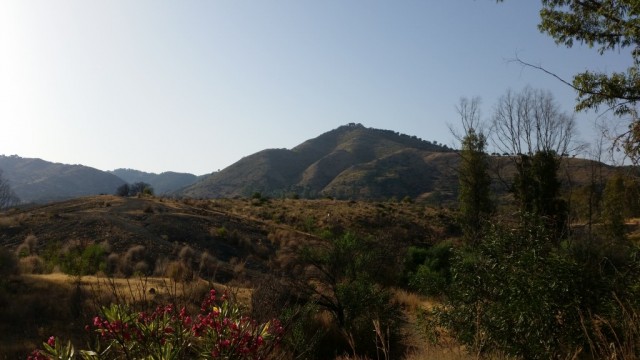
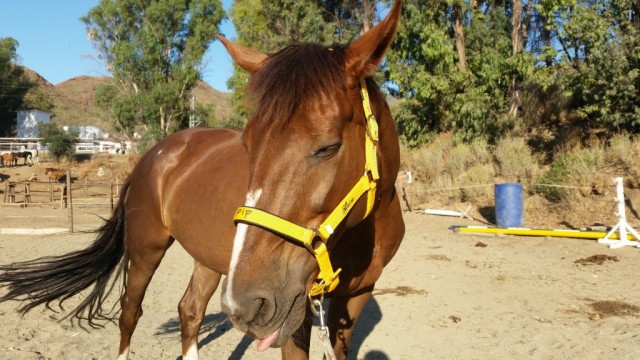
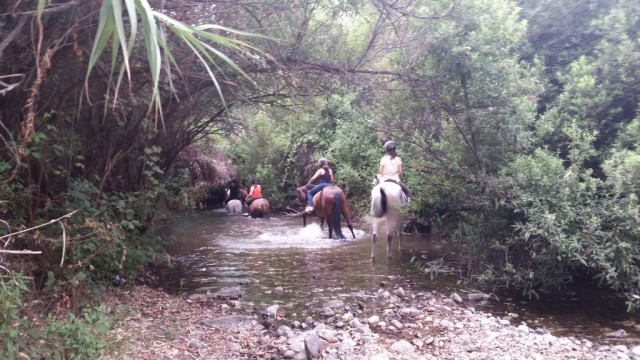
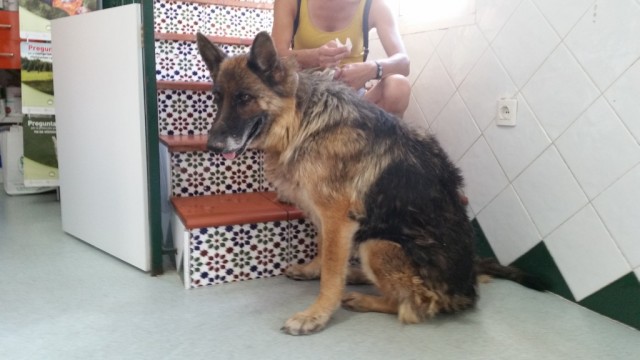
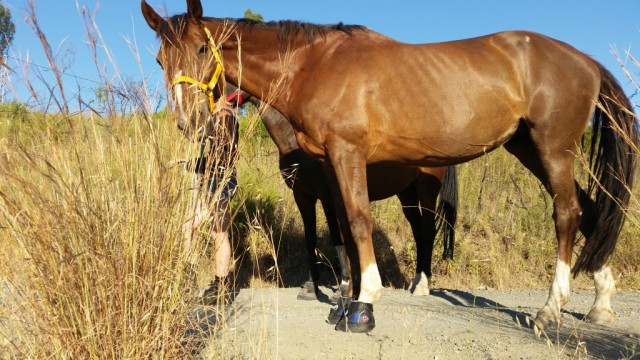
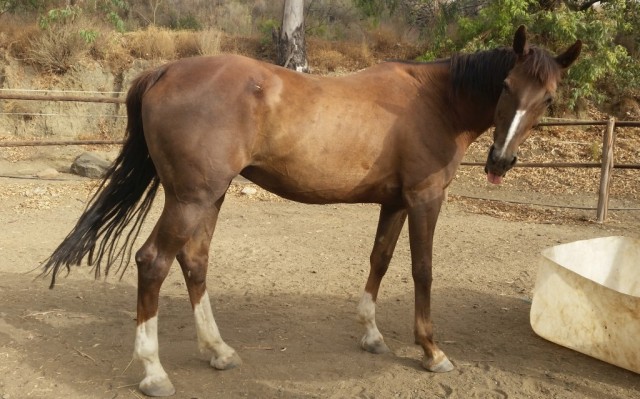
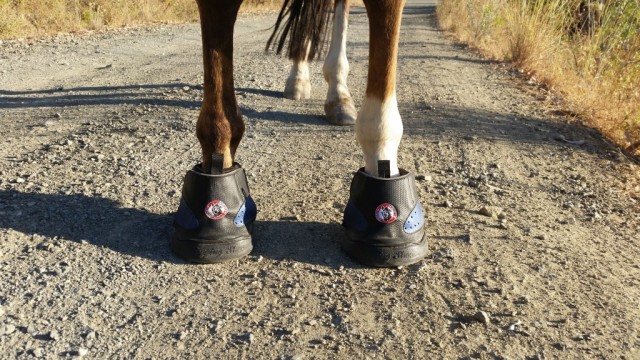
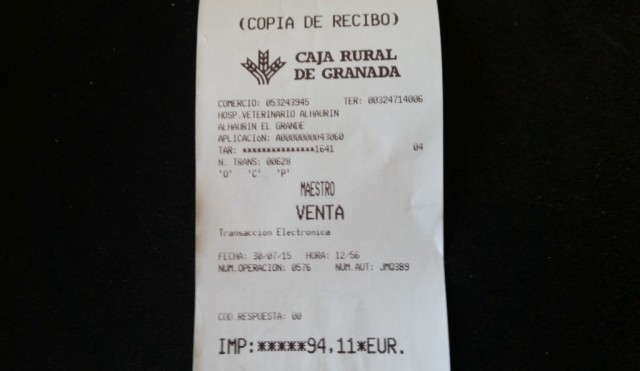



Andrew,
It is the same in the US. I find the middle class shrinking, the rich getting very rich. I cannot see how anyone can afford the vet bills for keeping an animal and it seems the ones most likely to have dogs, cats, or horses are the ones with the least income. In town, you are supposed to register and license them, if they get loose, you will be fined. A typical vet bill runs $200 USD for exam, fecal test, and various flea,tick, heartworm meds for 3 months if lucky.
I took a 14 year old Beagle in because I thought it was the end. She wouldn’t eat, diarrhea, etc. $275 for blood test, anti-nausea meds, electrolytes and was saved from the $320 quoted price because I refused the pain meds knowing she had adverse reactions to them.
I actually had a doctor tell me that vets were charging astrological prices when she wanted cataracts removed from her old dog and was told $4000 USD.
For horses, it is worse because you cannot dump them anywhere without fear they will run onto the road and kill car occupants. So, many are found in horrible conditions or at auctions sold to whomever is there for pennies. You will find many people here believe in slaughter and feel it is the only way to get prices for horses back up. But, we do not see the transport, the treatment, the type of death they experience. When so many people are poor and starving, our prisons spend more money than we do on education, when our roads and bridges are in deplorable conditions, when our country spends money on weapons instead, it is hard to find solutions for any animals. It seems the pursuit of the mighty dollar is the root here.
hullo Andrew from Patrick and thank you for the latest chatter from Spain. The story of Sheila brings grief. But I take this opportunity to mention that it aint necessarily always so. We kept horses in the hills around 50 kms inland from your location and one day a dog leapt up from the undergrowth at us……..seeking adoption…….and yes, a german shepherd. But on this occasion it is a good news story; she became healthy and thrives and now lives with us in Scotland. (Corrie says hullo-buena dia-woof woof….. )
Hi Andrew
This post like so many really challenges the ‘natural’ label. The story of Sheila is moving and if left to nature, she would have died suffering and suffering alone. Nevertheless, I think she was extremely intelligent to find you both and a ‘natural’ exist to her life – pain free, mature and even spiritual. She sought the very people who could make this possible, for I know how much you treasure and love canines, no matter where they appear. So your story moves me to tears, but tears of joy for the transcending meeting with Sheila. And, maybe, just maybe, others will appreciate the incredible gift that a dog can impart – sensitivity and optimistic appreciation of life in the face of death. Sheila continues to tell that story through your words. It was a good and dignified meeting of true soul mates.
Otherwise, we are enduring the relatively hard conditions you mention with our horses, here, too, in Portugal. This means lots of time in their cool fly-free stables with intermittent jaunts out for apples and peaches. Yet the extreme temperatures make the jaunts short as the horses are only too happy to retreat to a more hospitable environment. And can you blame them as we, too, take refuge from the sun during peak hours. That said, the horses radiate happiness through their eyes and we join them in our common sense of home, community and well being.
Thanks for sharing
Good on you both and your extended family
Ian
Dear Ian
You put it so well, the crossing of the paths of Sheila and ourselves: “a good and dignified meeting of true soul mates”. As with every passing life whose death one’s co-authors, there are moments of doubt. Your words make it easier to deal with them. Thank you.
With the experience of summer in Andalusia behind us, I can truly appreciate your words on conditions in your neck of the woods. Give the herd a good long scratch from me and may you and yours…
Be well!
Andrew
Hi andrew this is a propos of nothing but I am wanting to see how Jason Wauters is doing nowadays. Can’t seem to find much on the web but presume he is teaching as it’s a while since he was setting up EDEN. Are you in touch with him? Any news?
thanks
Mundy
Dear Mundy
For reasons of his own Jason is currently keeping a low profile, as he prepares to relaunch EDEN. Which is not to say that he is not busy. He is but it is all happening by word of mouth.
At present Jason is offering one-on-one courses at his client’s place. If you are interested, please let me know and I will pass on your details to him.
Be well!
Andrew